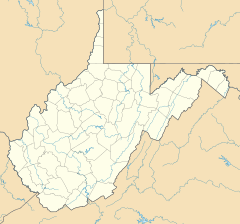Gleason, West Virginia facts for kids
Quick facts for kids
Gleason
|
|
|---|---|
| Country | United States |
| State | West Virginia |
| County | Mineral |
| Elevation | 1,765 ft (538 m) |
| Time zone | UTC-5 (Eastern (EST)) |
| • Summer (DST) | UTC-4 (EDT) |
| GNIS feature ID | 1557043 |
Gleason was an unincorporated community found in Mineral County, West Virginia, United States. It was once a small settlement, likely connected to the area's history of coal mining. Today, it is no longer an active community.
Contents
What is an Unincorporated Community?
An unincorporated community is a place that doesn't have its own local government. This means it's not officially a city or town. Instead, it's governed by the larger county or state. Think of it as a neighborhood without its own mayor or city council.
- People living there still follow county and state laws.
- Services like police and fire protection come from the county.
- Many small settlements start as unincorporated communities.
Where Was Gleason Located?
Gleason was situated in the northeastern part of West Virginia. This state is known for its mountains and beautiful natural areas. The community was specifically located in Mineral County.
Mineral County's Geography
Mineral County is in the eastern panhandle of West Virginia. It borders the state of Maryland. The land in this area is often hilly and forested.
Elevation of Gleason
Gleason was located at an elevation of 1,765 feet (about 538 meters) above sea level. This high elevation is typical for many places in mountainous West Virginia. Being high up means it might have had cooler temperatures and scenic views.
A Look Back: Gleason's History
While specific details about Gleason are limited, its location in West Virginia and its classification as a "coal town" suggest its past. Many small communities in this region grew because of the coal industry.
Coal Towns and Their Importance
Coal towns were settlements built around coal mines. Miners and their families lived in these towns. The towns often had company stores, schools, and churches. They were vital to the economy of West Virginia for many years.
- Coal mining was a major industry in the state.
- These towns provided homes for the workers.
- When mines closed, many coal towns became much smaller or disappeared.
Why Communities Change
Over time, industries change. As coal mining became less common in some areas, many coal towns like Gleason saw their populations shrink. People moved away to find new jobs. This is a common story for many small communities across the United States.



